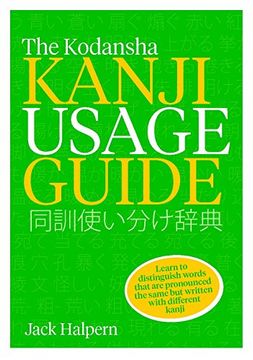Share
The Kodansha Kanji Usage Guide: An a to z of kun Homophones (in English)
Jack Halpern (Author)
·
Kodansha Usa
· Paperback
The Kodansha Kanji Usage Guide: An a to z of kun Homophones (in English) - Jack Halpern
$ 16.07
$ 22.95
You save: $ 6.89
Choose the list to add your product or create one New List
✓ Product added successfully to the Wishlist.
Go to My WishlistsIt will be shipped from our warehouse between
Tuesday, May 28 and
Thursday, May 30.
You will receive it anywhere in United States between 1 and 3 business days after shipment.
Synopsis "The Kodansha Kanji Usage Guide: An a to z of kun Homophones (in English)"
Kun homophones — native-Japanese words that are pronounced alike but are written with different kanji, and often differ in meaning — pose a particular challenge to students at the intermediate level. Words like noboru or kaeru, for example, can be written with several different kanji, each contributing a distinct shade of meaning. The often-subtle nuances conveyed by kanji confuse even Japanese people, and very few dictionaries provide good guidance on kanji usage.The Kodansha Kanji Usage Guide is a new type of reference work that enables learners to deepen their understanding of how kun homophones are used in contemporary Japanese. The first Japanese-English resource devoted exclusively to kun homophones, the book presents detailed usage articles that show the differences and similarities for 675 homophone groups, or 1590 kanji headings — the vast majority of single-character kun homophones in current use.With headwords arranged in Japanese a-i-ue-o order and thousands of illustrative examples of kanji in context, the Usage Guide is at once a dictionary and a manual—an all-around resource for clarity on kanji used in kun homophones. Armed with this unique guide, learners will discover in kanji new meanings they never knew existed, and learn to write Japanese more articulately than ever before.
- 0% (0)
- 0% (0)
- 0% (0)
- 0% (0)
- 0% (0)
All books in our catalog are Original.
The book is written in English.
The binding of this edition is Paperback.
✓ Producto agregado correctamente al carro, Ir a Pagar.

